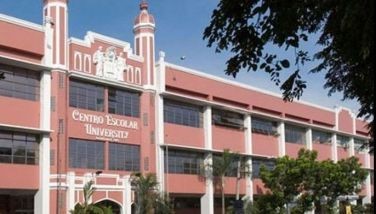Jueteng numbers mind-boggling

June 8, 2005 | 12:00am
If serious with its inquiry, the Senate sooner or later will have to dig deep into the whys and wherefores of jueteng. It may already have had a foretaste of how rooted and widespread the illegal numbers game is. Only five days after President Gloria Arroyo ordered all-out war, PNP chief Art Lomibao declared the vice wiped out in all of Luzon. But by weekend, to his discomfiture and despite sacking several local police chiefs, word came that "guerrilla draws" were still being held the usual twice or thrice a day. It turned out that the handful of national and provincial protectors had lied low. But their slew of cabos (supervisors) and cobradors (collectors) in the barrio, dependent solely on jueteng for income, were running improvised draws. Some were unequipped with the customary rebisadors (odds makers) and game balls. Undaunted, they simply switched to lot-teng, a once-a-day variant in which the last two numbers of the official daily lotto comprised the jackpot combination.
A study by retired police superintendent Wally Sombero could give the senators deeper insight. In "The Truth About Jueteng," the officer traces the origin of the game to Chinese traders during the Spanish regime, to the many attempts to eradicate it by decree. More important, he draws a table of organization that details the national and provincial protectors, and how they have established the most sophisticated crime syndicate down to the city or municipal, barangay, and sitio or purok levels.
The jueteng numbers are mind-boggling, and Sombero’s statistics give a sampling of how tough the job will be to wipe it out. From studies while at the PNP-Criminal Investigation and Detection Group, he found out that a city or town normally would have 15 cabos for complete coverage by the provincial fixer and local financier. Each cabo in turn has 15 cobradors, again each servicing at least 30 daily bettors. With Luzon consisting of 606 cities and towns, there would be 9,090 cabos and 136,350 cobradors. That Luzon syndicate of 145,440 vice men does not include thousands more of bagmen, rebisadors, banca (drawers) and assorted gofers. If the bettors too are to be counted in, since they practically form part of the crime network, there would be over four million jueteng men and women in Luzon alone. Almost the same number probably operate and play the masiao, lot-teng and Last-2 variants in the Visayas and Mindanao.
Sombero’s study is reminiscent of the figures crunched out by experts in passing the Comprehensive Dangerous Drugs Act of 2002. Back then, the number of major shabu distributors were only eight. But under them were hundreds of territorial dealers and protectors, under whom at least 60,000 pushers peddled the white powder to addicts. Congress passed one of the world’s harshest narcotics laws, with selling any amount a no-bail offense, but failed to anticipate the effects of enforcement. All 2,000 or so regional, provincial, city and municipal jails presently are overcrowded with pushers under indictment.
Back to jueteng, national and provincial protectors, and city or town financiers and fixers come and go for various causes: change of political administration or police chiefs, arrests, retirement, or at times murder. But, Sombero notes, cabos and cobradors remain a loose but permanent network. (Some have inherited their jobs from parents.) As such, the syndicate at the grassroots constitutes a formidable political set-up as well, handy for vote-getting during elections and whatever actions in between. Like drug lords who have perfected narco-politics, jueteng financiers and fixers can use their networks to make or unmake politicians, police officers, even prosecutors and judges.
Sombero throws in a poser: can the police ever break the national and local gambling syndicates? He answers his own question with more startling figures. A typical town would have a police strength of 40 men, three of them officers in charge of supervision and administration. Of the remaining 37, five would be on sick or vacation leave. The 32 hands on deck would be divided into two 12-hour or three eight-hour shifts, depending on the index crime incidence. Already undermanned and overworked, they also are underpaid and ill-equipped. It would take 20 well-armed cops and seven vehicles to conduct a successful operation against a jueteng den. The local police aren’t so lucky to have such materiel. A serious Senate prove in aid of legislation would do well to consider that.
Impresario Pablo Tariman stages on June 12 what classics buffs rave could be the concert of the year. The Independence Day gala at Philamlife Theater on U.N. Avenue, Ermita, Manila, will have multi-awarded cellist Victor Michael Coo and pianist Oliver Salonga playing with the Manila Philharmonic Orchestra, under the baton of Rodel Colmenar.
Coo and Salonga were consecutive 1st-prize winners in the National Music Competition for Young Artists. Coo also won three concerto fests in Michigan, Florida, and Indiana, USA. Salonga won in similar tilts in Florida and Manila.
The program consists of Liszt’s piano and Dvorak’s cello concertos. For ticket reservations and other events, call (0918) 7376901 or (02) 9017156.
E-mail: jariusbondoc@workmail.com
A study by retired police superintendent Wally Sombero could give the senators deeper insight. In "The Truth About Jueteng," the officer traces the origin of the game to Chinese traders during the Spanish regime, to the many attempts to eradicate it by decree. More important, he draws a table of organization that details the national and provincial protectors, and how they have established the most sophisticated crime syndicate down to the city or municipal, barangay, and sitio or purok levels.
The jueteng numbers are mind-boggling, and Sombero’s statistics give a sampling of how tough the job will be to wipe it out. From studies while at the PNP-Criminal Investigation and Detection Group, he found out that a city or town normally would have 15 cabos for complete coverage by the provincial fixer and local financier. Each cabo in turn has 15 cobradors, again each servicing at least 30 daily bettors. With Luzon consisting of 606 cities and towns, there would be 9,090 cabos and 136,350 cobradors. That Luzon syndicate of 145,440 vice men does not include thousands more of bagmen, rebisadors, banca (drawers) and assorted gofers. If the bettors too are to be counted in, since they practically form part of the crime network, there would be over four million jueteng men and women in Luzon alone. Almost the same number probably operate and play the masiao, lot-teng and Last-2 variants in the Visayas and Mindanao.
Sombero’s study is reminiscent of the figures crunched out by experts in passing the Comprehensive Dangerous Drugs Act of 2002. Back then, the number of major shabu distributors were only eight. But under them were hundreds of territorial dealers and protectors, under whom at least 60,000 pushers peddled the white powder to addicts. Congress passed one of the world’s harshest narcotics laws, with selling any amount a no-bail offense, but failed to anticipate the effects of enforcement. All 2,000 or so regional, provincial, city and municipal jails presently are overcrowded with pushers under indictment.
Back to jueteng, national and provincial protectors, and city or town financiers and fixers come and go for various causes: change of political administration or police chiefs, arrests, retirement, or at times murder. But, Sombero notes, cabos and cobradors remain a loose but permanent network. (Some have inherited their jobs from parents.) As such, the syndicate at the grassroots constitutes a formidable political set-up as well, handy for vote-getting during elections and whatever actions in between. Like drug lords who have perfected narco-politics, jueteng financiers and fixers can use their networks to make or unmake politicians, police officers, even prosecutors and judges.
Sombero throws in a poser: can the police ever break the national and local gambling syndicates? He answers his own question with more startling figures. A typical town would have a police strength of 40 men, three of them officers in charge of supervision and administration. Of the remaining 37, five would be on sick or vacation leave. The 32 hands on deck would be divided into two 12-hour or three eight-hour shifts, depending on the index crime incidence. Already undermanned and overworked, they also are underpaid and ill-equipped. It would take 20 well-armed cops and seven vehicles to conduct a successful operation against a jueteng den. The local police aren’t so lucky to have such materiel. A serious Senate prove in aid of legislation would do well to consider that.
Coo and Salonga were consecutive 1st-prize winners in the National Music Competition for Young Artists. Coo also won three concerto fests in Michigan, Florida, and Indiana, USA. Salonga won in similar tilts in Florida and Manila.
The program consists of Liszt’s piano and Dvorak’s cello concertos. For ticket reservations and other events, call (0918) 7376901 or (02) 9017156.
BrandSpace Articles
<
>
- Latest
- Trending
Trending
Latest

























